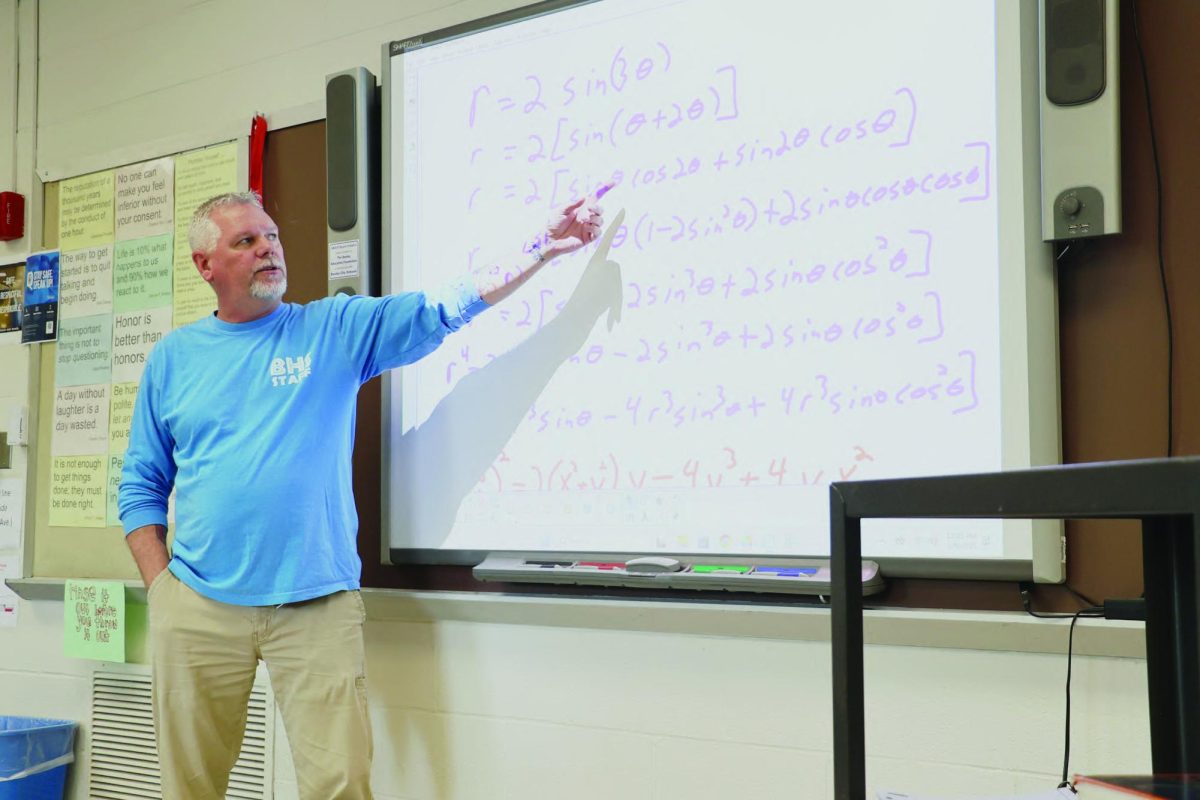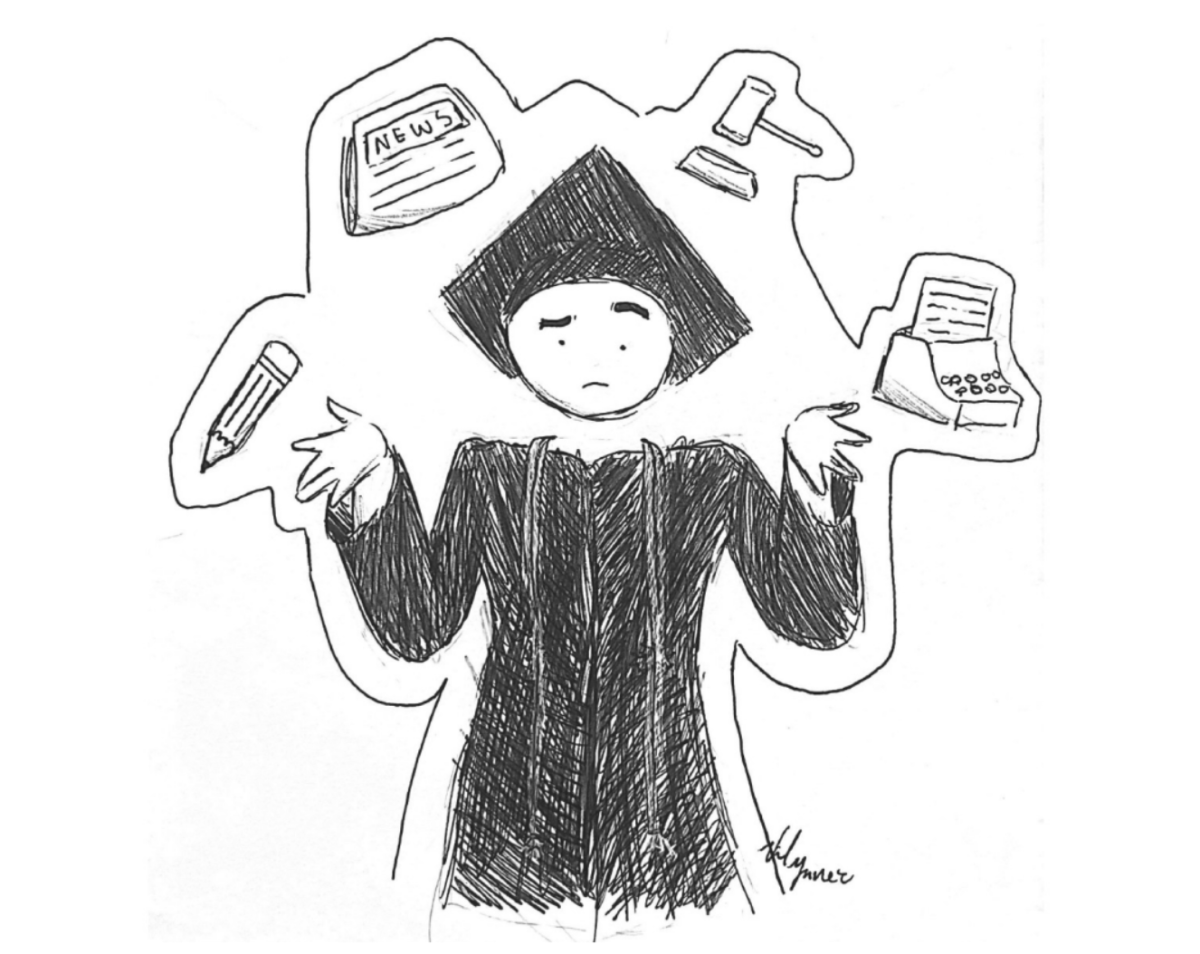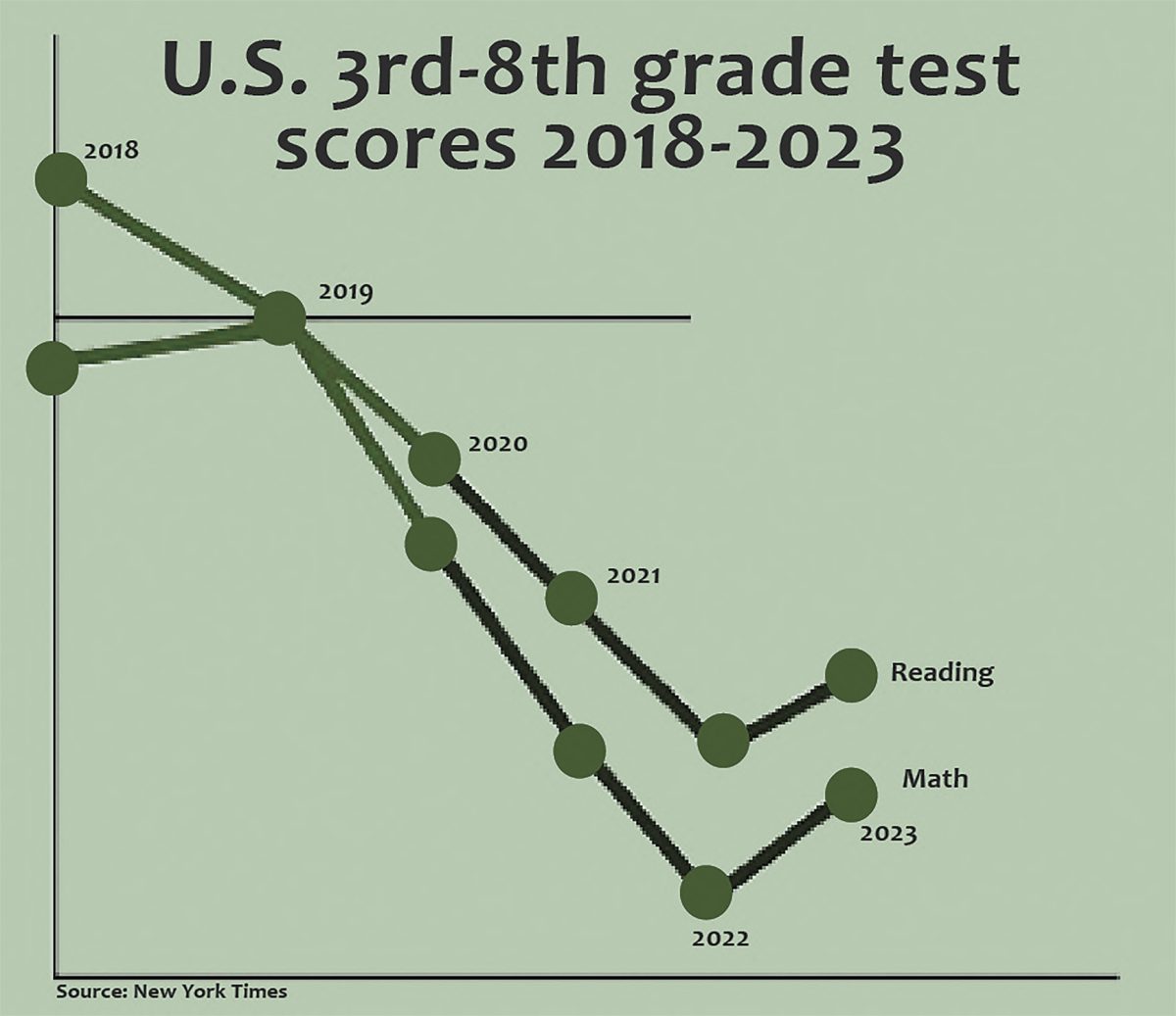At the start of last school year, freshman Samara Kahan woke up for the first day of school to see her friends and attend her regular classes. This year, as her freshman year of high school began, Kahan turned on her computer to attend an online Zoom class from her bedroom for her first day.
About a month later with the introduction of hybrid classes, half of the students mask up and head to school each day while the other half log on to Zoom classes from home. Those at school have to maintain distance between their classmates and teachers as well as constantly be aware of keeping surfaces clean. For the first time, teachers were forced to utilize Zoom as well as other online tools to teach their classes from afar. This unfamiliar experience came with many changes for students and teachers alike.
Kahan said that she faced many challenges with online learning. While attending classes over a Zoom call, Kahan said it is harder to be engaged.
“For me personally, I learn a lot from other students’ questions, and people seem less likely to talk while online,” she explained. “I definitely feel like I’m not learning as much as I could be in class.”
Kahan added that some concerns of hers during distance learning were getting to know the teachers and the heavy workload now that she is in high school. Although distance learning had its challenges, Kahan was eager to go hybrid.
“I was excited to see my classmates and to get to know my teachers,” she explained. “I feel like that made everything feel more normal.”
Sophomore Samuel Grayson also found that learning alongside others helps him to succeed in school. His primary frustration with distance learning was not getting to see his classmates, he said.
“The biggest difference is the lack of social interaction,” Grayson said. “Unlike with in-person classes, there is no time for me to talk to other students in my class.”
Although he found some difficulties with online school, Grayson explained that there were positives as well. One perk of being online was the flexibility of his schedule, he said. He noticed that there were less time constraints and liked that they were given independent work days to do assignments.
Senior Sammi Nack was also optimistic about distance learning. Nack said that since teachers were going through the same experience and had similar challenges as the students, they were more understanding.
“I liked that teachers were pretty flexible with online school and understood that there were technical difficulties, “ Nack explained.
Similarly, Kahan said that the flexibility of her schedule helped her ease into high school and made the transition less stressful.
“Teachers were really understanding because of our situation,” she said.
Nonetheless, all three agreed that they looked forward to the transition into hybrid and getting to see their classmates again. Grayson said he was eager to return to his science class.
“I was most excited about being able to do labs in person again,” Grayson said.
Math teacher Melissa McCreary explained that, like Grayson, many students value interactive work at school. She agreed that students benefit from working together and that learning outside of the classroom makes it harder for her to get to know her students.
“It is more difficult to form relationships with students and to gauge how they are really feeling about the content by just looking at them on the screen,” she said.
Nack found that in-class interactions are important to her as well, and that they encourage her to be more engaged in class, which she misses online.
“We don’t have that student to teacher relationship and communication we would have if we were in school,” she explained.
McCreary added that she likes to get everyone involved in the classroom and that participation is very important to her.
“In actual class, I am not big on raising hands,” McCreary said. “I encourage everyone to just join in and ask what they need to as the discussion flows, but that has a very different feel to it on Zoom.”
Although some students may suffer from this, others who work better independently and benefited from being able to work at their own may use it to their advantage, she explained.
McCreary said that another perk of teaching online was that she was able to better utilize technology that she plans to use more in the future and continue making videos for students to help reinforce concepts.
“I like having all of the assignment submissions logged in Canvas so I can quickly go back and review a student’s work,” McCreary explained.
French teacher David Kozy also said he benefited from getting to learn how to use some of the online tools like Zoom and Google Docs, which he implemented into his classes. Kozy added that this came with the challenge of becoming more proficient in technology. Although there were many challenges that came with online learning, he explained his greatest challenge was creating a lesson plan that promoted engagement and participation from home.
“I really believe that learning a language is all about interacting with the language and also interacting with your peers,” Kozy said.
During hybrid, Kozy plans on continuing to use more online resources in his classes that he picked up while in distance learning.
Aside from the challenge of teaching his class from home, Kozy said that he took a lot away from the experience.
“As a teacher, it is easy to fall into a routine, but this experience helped me to stop, rethink and reevaluate what I do in class,” he said.
Kozy also added another takeaway from the experience was that he missed teaching his students in class and that it also reaffirmed his love for teaching French.
“I’ve always been a firm believer that when you do anything hard, you’re going to learn a lot from it,” Kozy said.


















